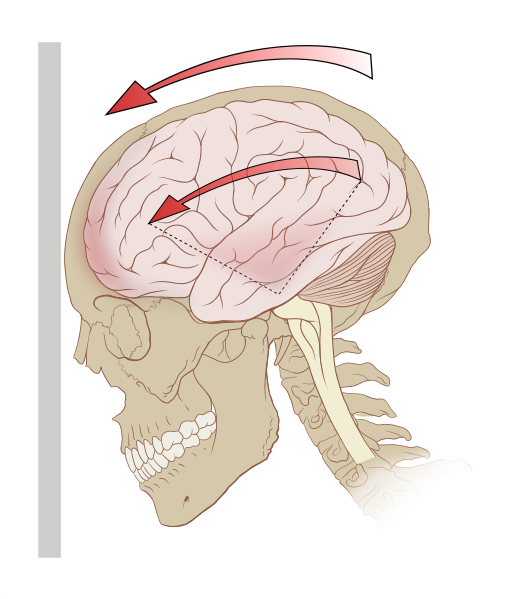Concussion: Difference between revisions
Jump to navigation
Jump to search
| (8 intermediate revisions by the same user not shown) | |||
| Line 10: | Line 10: | ||
{{Concussion}} | {{Concussion}} | ||
== | ==[[Concussion overview|Overview]]== | ||
==[[Concussion historical perspective|Historical Perspective]]== | |||
==[[Concussion classification|Classification]]== | |||
==[[Concussion pathophysiology|Pathophysiology]]== | |||
==[[Concussion causes|Causes]]== | |||
==[[Concussion differential diagnosis|Differentiating Concussion from other Diseases]]== | |||
==[[Concussion epidemiology and demographics|Epidemiology and Demographics]]== | |||
==[[Concussion risk factors|Risk Factors]]== | |||
==[[Concussion natural history, complications and prognosis|Natural History, Complications and Prognosis]]== | |||
== | ==Diagnosis== | ||
[[Concussion diagnostic criteria|Diagnostic Criteria]] | [[Concussion history and symptoms|History and Symptoms]] | [[Concussion physical examination|Physical Examination]] | [[Concussion CT|CT]] | [[Concussion MRI|MRI]] | [[Concussion other imaging findings|Other Imaging Findings]] | [[Concussion other diagnostic studies|Other Diagnostic Studies]] | |||
==Treatment== | |||
[[Concussion medical therapy|Medical Therapy]] | [[Concussion primary prevention|Primary Prevention]] | [[Concussion secondary prevention|Secondary Prevention]] | [[Concussion cost-effectiveness of therapy|Cost-Effectiveness of Therapy]] | [[Concussion future or investigational therapies|Future or Investigational Therapies]] | |||
=== | ==Case Studies== | ||
[[Concussion case study one|Case #1]] | |||
==Related Chapters== | ==Related Chapters== | ||
*[[Post-concussion syndrome]] | *[[Post-concussion syndrome]] | ||
*[[Second-impact syndrome]] | |||
*[[Dementia pugilistica]] | |||
{{Injuries, other than fractures, dislocations, sprains and strains}} | {{Injuries, other than fractures, dislocations, sprains and strains}} | ||
Revision as of 17:11, 27 February 2013
For patient information, click here
| Concussion | |
 | |
|---|---|
| Deceleration can exert rotational forces in the brain, especially the midbrain and diencephalon. |
Editor-In-Chief: C. Michael Gibson, M.S., M.D. [1]
|
Concussion Microchapters |
|
Diagnosis |
|---|
|
Treatment |
|
Case Studies |
|
Concussion On the Web |
|
American Roentgen Ray Society Images of Concussion |
Overview
Historical Perspective
Classification
Pathophysiology
Causes
Differentiating Concussion from other Diseases
Epidemiology and Demographics
Risk Factors
Natural History, Complications and Prognosis
Diagnosis
Diagnostic Criteria | History and Symptoms | Physical Examination | CT | MRI | Other Imaging Findings | Other Diagnostic Studies
Treatment
Medical Therapy | Primary Prevention | Secondary Prevention | Cost-Effectiveness of Therapy | Future or Investigational Therapies
Case Studies
Related Chapters
Template:Injuries, other than fractures, dislocations, sprains and strains
da:Hjernerystelse
de:Gehirnerschütterung
el:Εγκεφαλική διάσειση
it:Commozione cerebrale
he:זעזוע מוח
nl:Hersenschudding
no:Hjernerystelse
fi:Aivotärähdys
sv:Hjärnskakning